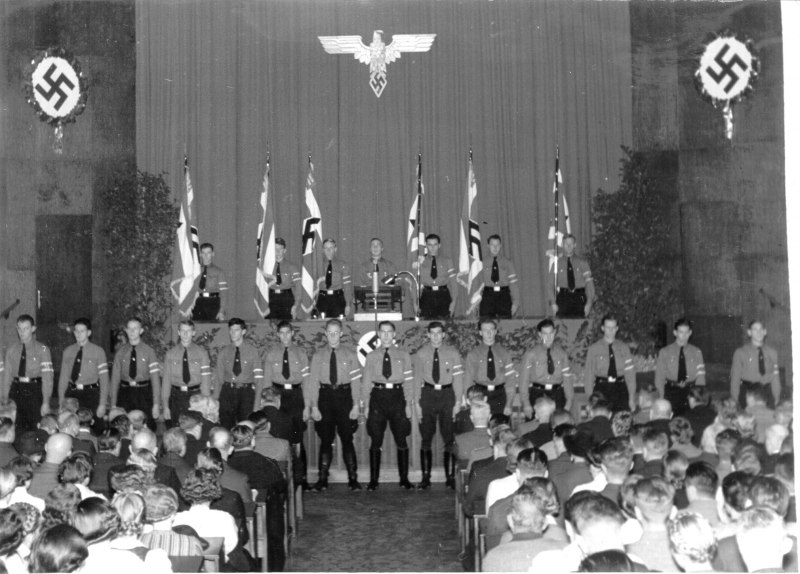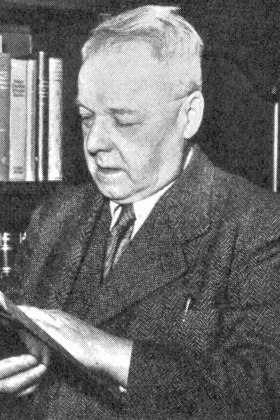AudiMax
The AudiMax – Auditorium Maximum – is the largest lecture hall in the main building of the University of Vienna. It was built during Austrofascism by roofing an inner courtyard. With a complete renovation in 2006 the AudiMax still is a location for large lectures and events, but also the site of student protests (“Audimaxism”).
Spatial situation until construction of the AudiMax
When the new university building was planned in 1873, the University of Vienna had 3,813 students, when the building was opened in 1884 the number had risen by 50% and 50 years later it had grown to 11,439 (+300%). A large lecture hall housed 240 people, the next largest only about 140. Many were even smaller and large lectures had to be held in the small ceremonial hall, which held at most 350 people.
As soon as the new main building was opened, it was already too small. Due to the rising student numbers and despite the addition of several new buildings for the natural sciences, the room for large lectures, especially in the large disciplines psychology, German studies and Romance studies, was lacking. Particularly the lectures of Josef Nadler (professor of German language and literature) were very popular among the students. From the beginning of the 1930s onwards, the rush of students encouraged the construction of the Auditorium Maximum.
Construction during Austrofascism
When the Austrofascist regime added compulsory ideological lectures for all students, a new large lecture hall was finally built in 1935/36. Before that, the university had unsuccessfully tried to acquire the parliament building for this purpose, because it had lost its former function. Since the republic had been eliminated and the parliament had been dissolved by Chancellor Engelbert Dollfuß, the plenary halls would have been ideal lecture halls. Instead, the AudiMax was built. It was not meant to only be a functional building, but also was supposed to breathe new life into the university, as the opening ceremony already showed. For the first time since the main building was inaugurated, a lecture hall was consecrated by the Church. The blessing and subsequent speech by Cardinal-Archbishop Theodor Innitzer were broadcast live via radio. Shortly before the ceremony in December 1936, the podium had been newly furnished: to the speaker’s right hung a large crucifix and on his left the two-headed eagle with two halos – the new state crest of Austrofascist Austria. Framed by these symbols, the professors held their ideological lectures on sanctified ground. Thus, the students not only heard the lecture, but also adopted the new regime’s central symbols.
The AudiMax was also the largest and most modern event hall in Vienna at the time. It was equipped with film, sound and projection facilities, a large cinema screen and a mobile laboratory table. Only 15 months later, the National Socialists came into power and the political staging was removed and replaced by swastikas, and so this phase did not have a lasting effect on the university’s remembrance and commemoration culture.
During National Socialism, after the “Anschluss”, large events were held at the AudiMax: scientific conferences, semester opening ceremonies, as well as award ceremonies – for example the bestowal of the honorary senator title established in National Socialism and awarded to “pioneers of Greater Germany” in 1941, or the bestowal of the honorary doctorate to Josef Weinheber in 1942.
Demonstrations
After 1945 the AudiMax remained a central location for large events, along with the Konzerthaus and the Musikvereinssaal. Until the Stadthalle and the Vienna International Center were built, conferences of, for example, the UNIDO and other organizations were held here, as well as the inaugurations of rectors. The sound and film system was also used for cinema and slide presentations until the 1980s. Often the AudiMax and all its adjoining rooms were also used by the Österreichische HochschülerInnenschaft (Austrian Students’ Association, ÖH) for this purpose as well as for student counseling at the start of semesters. Mainly, though, large lectures for students of law, psychology, history, German studies and other disciplines were held here, even after the law students moved to the Juridicum in 1984.
Renovation
In 2005/06, after 70 years of use, a desperately needed full renovation was undertaken. The whole lecture hall was redesigned, enlarged by demolishing two atriums, and medially and acoustically adapted according to the Heimholtz-principle with resonator slits on both longitudinal walls. All this was done while trying to achieve the highest capacity possible: 750 people.
On the occasion of the reopening, a lecture series on the subject of “lectures” (see audiofiles) was held, which critically examined this very traditional teaching method of the university.
Protests | Audimaxism
Since the 1980s the AudiMax had often been the site of protests: assemblies, rallies and occupations (for example 1987, 1993, and most recently 2009 for several months). In 2009 the hall even lent its name to the protest movement called “Audimaxism”. “Uni brennt” (“university burns”) and “Audimaxism” became the “word of the year” in 2009. The expert judges with their head Rudolf Muhr from the University of Graz in cooperation with the Austrian Press Agency (APA) explained their decision by saying “Because of the ongoing protests, education has been seriously and comprehensively discussed for the first time in a long while”.
-

Das Auditorium Maximum im Hauptgebäude der Universität Wien, mit Blick auf das Podium, vor Anbringung von Doppeladler und Kruzifix 1936
-

Bericht über die Eröffnung des Auditorium Maximum in der Neuen Freien Presse, 15. Dezember 1936
-

Austrofaschistischer Doppeladler von Wilhelm Bormann, Originalausstattung des Auditorium Maximum 1936
Für die Ausstattung des zu eröffnenden Auditorium Maximum wurde 1936 über Anregung des Unterrichtsministers Hans Pernter und nach den Weisungen des...
-

Großkundgebung der NS-Studentenschaft im AudiMax der Universität Wien
Inszenierte Ansprache von Studentenführer Hubert Freisleben (1913–1999) Großkundgebung der NS-Studentenschaft im AudiMax der Universität Wien am 19...
-

Das AudiMax der Universität Wien nach der Renovierung 2005/06
Das Auditorium Maximum der Universität Wien wurde 2005 und 2006 renoviert und neugestaltet. Es bietet heute 756 Sitzplätze, eine Bühne über die...



